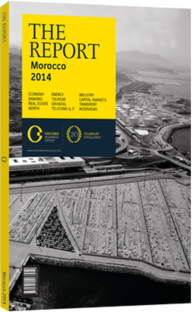Attijariwafa bank: Banking
COMPANY OVERVIEW: Attijariwafa bank is Morocco’s leading bank in terms of outstanding loans, with 25.5% market share as of November 30th, 2013, and it is number two in terms of collected deposits, with 26.0% market share as of the same date. It has 3037 branches within Morocco. The group has also been operating outside the country. Having begun its geographical expansion in 2005, the bank is now positioned in Tunisia, which makes up 5% of the group’s consolidated net income, and in nine Francophone countries in sub-Saharan Africa, which makes up 10%. Attijariwafa is a universal bank, operating in all segments: retail banking, investment banking, consumer loans, mortgages, etc. It is also the majority shareholder of Wafa Assurance, Morocco’s leading insurance company. Its own main shareholder is the National Investment Company, which owns 47.8% of its capital. Institutional investors hold another 28.6%, and the rest is a free float of 13.8%.
By the end of H1 2013, Attijariwafa bank increased its consolidated deposits by 5.1%. Outstanding loans experienced a positive trend, increasing by 2.4%. As for profit and loss, net banking income rose by 4.7%, due to a low progression of its net interest margin (+1.6% year-on-year) and a 4.6% drop in the income from market activities due to the negative evolution of capital markets. The good news is that the net fees margin saw a strong increase (+14.4%). The cost-to-income ratio barely budged, from 43.7% to 43.8%, leading to an increase in gross operating revenues (+4.6%). Finally, net income decreased by 4.8% due to the higher cost of risk (+67.7%) in a context marked by a significant rise of non-performing loans for the whole Moroccan banking industry.
STRATEGIC DEVELOPMENT: For 2013 and 2014, we estimate a growth in outstanding loans of 3.1% and 5.9%, respectively, driven primarily by the good performance of the bank’s sub-Saharan subsidiaries. We have upgraded our growth forecast for deposits to 5.6% in 2013 and 7.4% in 2014 following the favourable evolution of deposits in Morocco (+8.1% for the banking industry in 2013). Net banking income is expected to register an average annual growth rate of 6.8% over the 2013-15 period. Gross operational income, however, should drop by 0.2% in 2013, to Dh15.9bn (€1.4bn) before recovering in 2014 with a rise of 2.8%, to Dh16.4bn (€1.4bn), driven mainly by a decreasing cost-to-income ratio.
In a context marked by a general increase of nonperforming loans in the Moroccan banking sector due to a challenging macroeconomic context, we have increased the cost of risk in 2013 from 0.5% to 0.7% of the gross customer outstanding loans, representing a growth of 51.7% by the end of 2013. However, starting from 2014, we expect a progressive improvement of the group’s cost of risk. We believe that Attijariwafa bank’s expertise in risk management, combined with its policy of anticipating risk and provisioning against it (with a coverage ratio of 80.2% by the end of June 2013), will allow the group to bring the cost of risk back to a normative level once the economy’s and the sector’s environments show the first signs of a sustainable improvement. Finally, the bank’s net income should drop by 2.6% in 2013 and recover in 2014 with an increase of 8.2%.
While we have an overall neutral stance on the sector, we have a clear preference for Attijariwafa bank, for which we have a “buy” recommendation with a target price of 550Dh (€48.84) per share. We have three main reasons for this judgement. First, Attijariwafa bank’s net banking income is the one of the most diversified in the sector, both in terms of its revenue sources and in terms of geographic breakdown. Second, the bank is the most profitable in the industry, with an estimated return on equity of 13.5% in 2013 and a return on assets of 1.4% in 2013, compared to 10.3% and 1.1% respectively for its peers. Third, Attijariwafa bank is currently trading at a discount to its peers, with a 2013 price-to-earnings ratio of 14.2x, versus one of 17.5x for the sector.
You have reached the limit of premium articles you can view for free.
Choose from the options below to purchase print or digital editions of our Reports. You can also purchase a website subscription giving you unlimited access to all of our Reports online for 12 months.
If you have already purchased this Report or have a website subscription, please login to continue.

